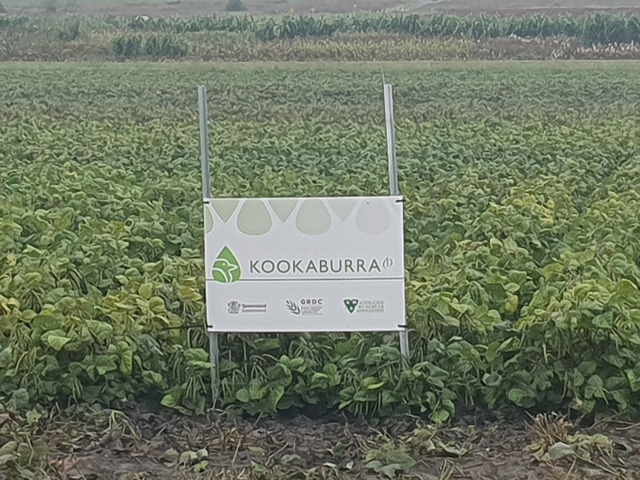
The phrases of “not again” or “shades of 2024 autumn” are echoing around our summer cropping areas of the state, with the constant rain on our mature crops of grain sorghum, mungbeans, and cotton.
Damaging to say the very least.
I could say a few unkind words about our continuous rainy weather; however, I won’t do that, because in however many months’ time, we will be looking for rain for sure.
The good news for us in broadacre agriculture over the last week was the release by the Qld DPI and in partnership with GRDC, of two new varieties of Mungbeans.
Named Brolga and Kookaburra, these two varieties will continue to escalate the Mungbean profile and grower popularity in our northern farming systems.
With our still popular Jade AU variety of Mungs being released in 2013, it is benefits all round for the ag industry for our summer cropping options in the 2025/26 planting season.
Being able to choose from the broad adaption features of Brolga to the regionally specific benefits of Kookaburra are big positives.
Mungbean dollar returns are not just in tonnes per hectare, but also in the grain quality produced and delivered at harvest time, and so it is with these two new varieties.
The large green shiny mungbean demands by much of our overseas markets is again highlighted by these two new Australian varieties.
Add in the agronomy benefits of extra disease packages of better Halo Blight resistance than Jade AU by Brolga and more improved resistance in Kookaburra for Halo Blight, Tan Spot, and Powdery Mildew, gives the Mungbean industry another boost in confidence with these new varieties.
Combine these new varieties along with Australian Mungbean Assc or AMA seed scheme for producing the best quality planting seed available, then bacterial diseases like Halo Blight and Tan Spot incidences are much reduced, however are never eliminated.
Of course, behind the release of any new Mungbean varieties is a fantastic team effort, and on this occasion, is the same.
Dr Merrill Ryan leads the Qld DPI pulse breeding team at Hermitage Research Centre, with William Martin as principal experimentalist based there as well.
Without doubt, these two long-term, very committed pulse crop breeding colleagues in the DPI are worthy of many accolades for their decades of excellent work.
Finally, and hopefully, dry weather surfaces for at least the next month or two in the grain and fibre growing areas of the state, plus also relief for the massively flooded grazing areas of Western Queensland.
This so we can get our Mungbean crops desiccated by the conventional method of registered herbicide applications or by the relatively new mechanical swathing option.
Certainly, I have had many calls re the swathing technique of getting this crop of Mungs off the paddock, thereby achieving good quality and no issues of pesticide exceedance above Maximum Residue Levels (MRL’s).
It just needs to dry out a lot more, doesn’t it?





